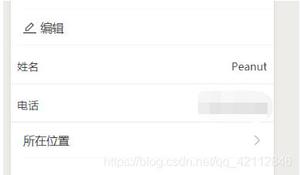Python中元组列表的分组求和
当需要找到元组列表的分组总和时,需要使用'Counter'方法和'+'运算符。
'Counter' 是一个帮助计算可散列对象的子类,i.e它在被调用时自行创建一个散列表(一个可迭代的,如列表、元组等)。
它为所有具有非零值作为计数的元素返回一个 itertool。
'+' 运算符可用于添加数值或连接字符串。
以下是相同的演示 -
示例
from collections import Counter输出结果my_list_1 = [('Hi', 14), ('there', 16), ('Jane', 28)]
my_list_2 = [('Jane', 12), ('Hi', 4), ('there', 21)]
print("The first list is : ")
print(my_list_1)
print("The second list is : " )
print(my_list_2)
cumulative_val_1 = Counter(dict(my_list_1))
cumulative_val_2 = Counter(dict(my_list_2))
cumulative_val_3 = cumulative_val_1 + cumulative_val_2
my_result = list(cumulative_val_3.items())
print("The grouped summation of list of tuple is : ")
print(my_result)
The first list is :[('Hi', 14), ('there', 16), ('Jane', 28)]
The second list is :
[('Jane', 12), ('Hi', 4), ('there', 21)]
The grouped summation of list of tuple is :
[('Hi', 18), ('there', 37), ('Jane', 40)]
解释
导入所需的包。
定义了两个元组列表,并显示在控制台上。
这两个元组列表都被转换为字典。
它们是使用“+”运算符添加的。
仅使用字典的“值”将此结果转换为列表。
此操作的数据存储在变量中。
此变量是显示在控制台上的输出。
以上是 Python中元组列表的分组求和 的全部内容, 来源链接: utcz.com/z/327578.html



